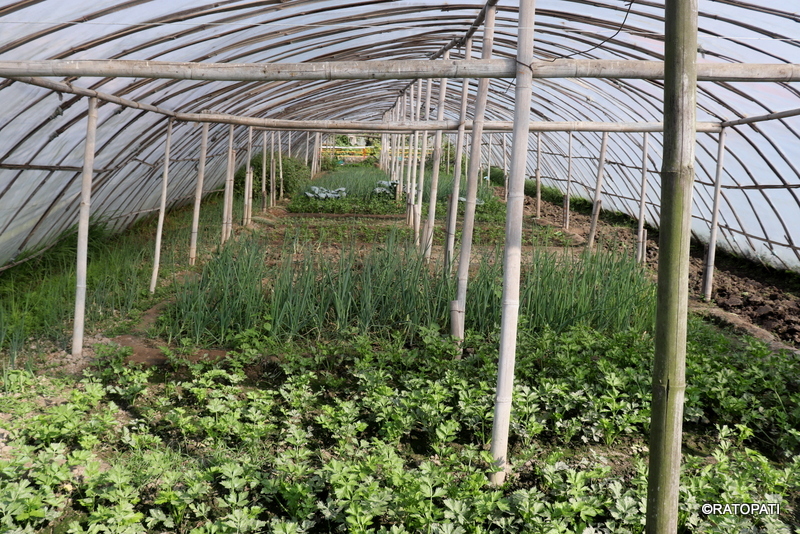
Agriculture remains the backbone of Nepal's economy, employing over 60% of the population and contributing approximately 24% to the nation’s GDP. Despite its significance, the sector faces persistent challenges including limited arable land, climate change, labor shortages due to migration, and poor access to modern resources.
The Strength of Mixed Farming Systems
Nepal’s agricultural model predominantly relies on Mixed Farming Systems (MFS), particularly in the hills and mountainous regions. In this traditional but highly sustainable system, livestock and crops support each other—livestock provide manure for soil enrichment, while crop residues are used for animal feed. This integrated approach not only enhances productivity but also promotes resource efficiency.
Key Challenges in Nepalese Agriculture
- Labor Migration: The outflow of youth and working-age individuals to foreign employment has left many farmlands fallow.
- Climate Vulnerability: Unpredictable rainfall, drought, and extreme weather events have made farming more precarious.
- Insufficient Irrigation: Only about 1.3 million hectares out of 2.7 million hectares of farmland have reliable irrigation access.
- Lack of Agricultural Inputs: Fertilizer use remains far below the recommended level, affecting productivity.
The Crucial Role of Agricultural Cooperatives
Agricultural cooperatives have emerged as a transformational force in modernizing and revitalizing Nepal's agriculture. They play a pivotal role in:
- Mobilizing Resources: Cooperatives help farmers access affordable credit, fertilizers, seeds, and equipment collectively.
- Capacity Building: They conduct training on climate-smart practices, organic farming, and efficient water use technologies.
- Market Linkage: Cooperatives help smallholder farmers aggregate produce and access better markets, ensuring fair pricing and reduced post-harvest losses.
- Infrastructure Development: Through collective efforts and public-private partnerships, cooperatives are involved in building irrigation systems, cold storage, and tunnels for vegetable farming.
Organizations like the Nepal Agricultural Cooperatives Central Federation Ltd. (NACCFL) have been instrumental in strengthening grassroots cooperatives across the country, enabling them to implement sustainable farming models at scale.
Pathways to Agricultural Transformation
To ensure long-term growth and sustainability of the sector, the following measures are vital:
- Expand and Support Mixed Farming Systems
- Invest in Irrigation Infrastructure
- Ensure Access to Fertilizers and Quality Inputs
- Promote Agricultural Education and Innovation
- Leverage Cooperatives for Scalable Impact
Conclusion
Nepal’s path to agricultural resilience lies in a blended approach that integrates traditional mixed farming with modern cooperative-led initiatives. Empowering farmers through cooperatives, improving infrastructure, and adopting climate-resilient practices can collectively usher in a new era of agricultural prosperity.
Frequently Asked Questions (FAQs)
1. What is Mixed Farming, and why is it important for Nepal’s agriculture?
Mixed farming in Nepal involves integrating both crop cultivation and livestock farming. This traditional practice enhances soil fertility, improves resource efficiency, and increases agricultural productivity. It is particularly effective in Nepal's hilly and mountainous regions, where the terrain poses challenges to monoculture farming.
2. How does climate change affect Nepal’s agriculture?
Nepal's agriculture is highly vulnerable to climate change, with unpredictable rainfall patterns, prolonged droughts, and extreme weather events. These factors have made farming more uncertain, affecting crop yields and livestock health.
3. What role do agricultural cooperatives play in Nepal’s farming sector?
Agricultural cooperatives help farmers access credit, resources, training, and better markets. They enhance the efficiency of farming by providing collective solutions, such as shared equipment, irrigation systems, and post-harvest management. They also support farmers in adopting climate-smart practices and connecting with larger markets for fair pricing.
4. What challenges do Nepalese farmers face when it comes to irrigation?
Irrigation access is a significant challenge in Nepal, with only about 1.3 million hectares of farmland receiving reliable irrigation out of the 2.7 million hectares. This shortage affects productivity, especially during dry spells or irregular rainfall.
5. How can Nepal's agricultural sector become more resilient to climate change?
To enhance resilience, it is essential to expand mixed farming systems, improve irrigation infrastructure, ensure access to quality inputs like fertilizers, and promote agricultural education and innovation. Additionally, leveraging cooperatives to scale up sustainable farming models can significantly contribute to climate resilience.
No comments yet.




